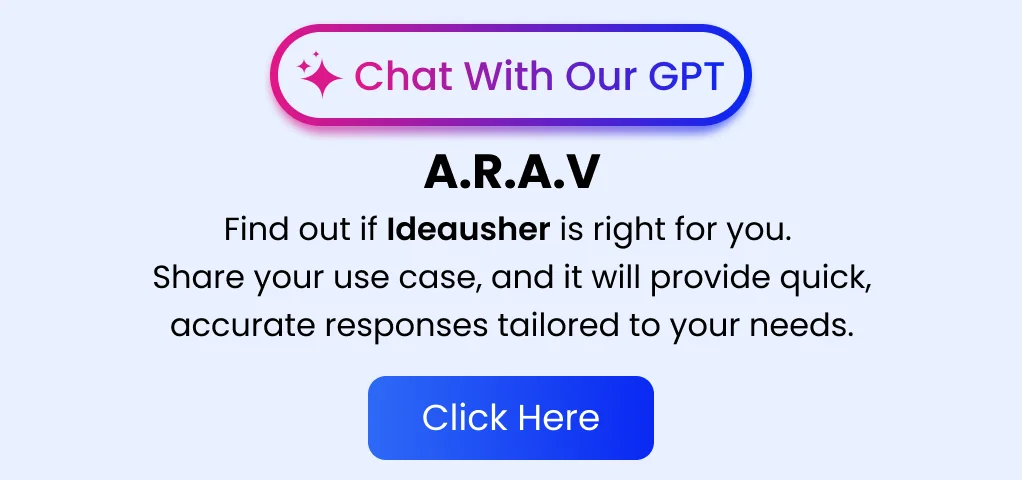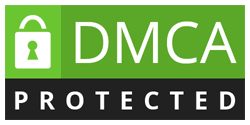Creating smart contracts for government debt issuance represents a major advancement in how public debt is managed. Traditionally, the process of issuing government bonds involves multiple intermediaries, leading to inefficiencies and higher costs. Blockchain and smart contracts simplify this by providing a secure, transparent, and automated solution that reduces the need for intermediaries and enhances the overall efficiency of the issuance process.
Blockchain adoption in this area ensures that every step of a government bond’s lifecycle, from issuance to redemption, is permanently recorded and can be tracked in real time. This improves transparency and significantly decreases the risk of fraud or manipulation. Additionally, tokenized bonds enable seamless, real-time trading, offering investors access to a more inclusive marketplace.
This blog will explore the technical details of creating smart contracts for government debt issuance, covering the benefits, challenges, and key components that make up a blockchain-based bond issuance platform. By understanding these aspects, you will gain valuable insights into how this technology can revolutionize public debt management for both governments and investors.
Understanding the Market Growth of Smart Contracts for Government Debt Issuance
The global market for smart contracts was valued at USD 20.36 billion in 2023 and is expected to grow to USD 47.25 billion by 2029, with a compound annual growth rate (CAGR) of 14.89%. This growth is largely driven by the increased integration of smart contracts into decentralized finance (DeFi) ecosystems, enhancing automation and efficiency in financial transactions.
One of the most promising applications for smart contracts is digital bond issuance. By leveraging blockchain technology, governments can simplify transactions, reduce human error, and eliminate intermediaries. This shift has the potential to disrupt the $133 trillion traditional bond market, leading to significant cost savings and improved efficiency throughout the bond issuance process.
Smart contracts for government debt issuance are transformative. Countries like Singapore and China have launched blockchain-based bonds, showcasing blockchain’s benefits of transparency, security, and efficiency. These early adopters highlight the confidence in digital bonds and smart contracts, simplifying issuance, reducing intermediaries, and enabling faster, real-time transactions.
Why Investors Should Invest in Smart Contracts for Government Debt Issuance?
Investing in smart contracts for government debt issuance offers significant long-term value. These platforms provide efficient, cost-effective, and transparent solutions, creating new investment opportunities. Below are key reasons why these platforms are attractive to investors:
A. Enhanced Efficiency and Transparency
Smart contracts automate the entire debt issuance lifecycle, from bond creation to interest payments and redemption. By removing intermediaries and executing predefined terms directly, they reduce administrative costs, minimize errors, and improve transparency. The World Bank’s 2018 blockchain-based bond, bond-i, highlighted these benefits, demonstrating faster settlement times and lower transaction costs.
B. Operational Efficiency
Integrating smart contracts into debt issuance automates critical functions like interest payments and bondholder management. This enables real-time settlements, reducing processing times from days to hours and eliminating the need for intermediaries like custodians. The Swedish central bank (Riksbank) is exploring blockchain for digital kronor and smart contracts in bond issuance.
C. Alignment with Modern Financial Markets
As financial markets embrace digital assets, smart contracts can facilitate the tokenization of government bonds, enabling fractional ownership and broadening access to sovereign debt. This enhances liquidity by making bond trading more efficient and accessible, opening the door for global investors to participate in government debt markets more securely.
D. Competitive Advantage
Early adoption of smart contracts offers governments and financial institutions a competitive edge in the evolving fintech landscape. Blockchain-based debt issuance enhances trust, security, and speed, helping countries like Estonia lead in government financing innovation. This early move can attract international investors, improve reputation, and create more efficient debt markets.
Why Governments Need Blockchain for Debt Issuance
As governments across the globe look for smarter ways to manage their financial systems, blockchain technology is emerging as a powerful solution in public finance. One of its most impactful applications is in debt issuance, where smart contracts are helping to modernize outdated processes. Moving toward a digital infrastructure is no longer a future consideration. It is a present-day necessity for governments that aim to strengthen transparency, lower administrative costs, and build greater public trust in how debt is issued and managed.
A smart contract government debt issuance platform provides access to real-time data, enables automated workflows, and ensures data integrity through tamper-resistant records. These features do more than improve efficiency. They create a more accountable and accessible framework for public borrowing.
Current Pain Points in Traditional Government Debt Issuance
Government debt issuance today remains heavily dependent on legacy financial infrastructure. Most bonds are issued through multiple intermediaries, including banks, custodians, and clearinghouses. This reliance results in lengthy settlement periods, often extending to two or more days after the trade date. These delays increase counterparty risks and affect the efficiency of public financial management.
Additionally, the process involves significant intermediary costs. From underwriting fees to custodial charges, these expenses reduce the net proceeds available to governments and taxpayers. The lack of real-time auditability also creates challenges for transparency and accountability. Stakeholders, including citizens and investors, often have limited access to timely information about bond issuances, repayments, and outstanding obligations.
How Blockchain and Smart Contracts Solve These Challenges
Blockchain and smart contracts address key challenges in government debt issuance by automating processes, reducing intermediary costs, and ensuring real-time transparency. They also enhance security through immutable records, reducing the risk of fraud and errors, and improving overall efficiency.
A. Transparency through immutable records
Blockchain provides a permanent and tamper-resistant ledger of all transactions related to government debt issuance and repayment. Every action is recorded in a way that can be verified and viewed by stakeholders, enhancing public trust and accountability.
B. Automation of financial operations
Smart contracts streamline critical functions such as interest payments, bond redemptions, and coupon schedules. These operations are executed automatically based on predefined conditions, reducing manual intervention, minimizing errors, and lowering operational costs.
C. Increased accessibility to bond markets
By issuing tokenized bonds, governments can reach a wider investor base that includes retail participants. This expanded access allows for broader capital inflow and encourages greater citizen participation in public financing initiatives.
D. Enhanced fraud prevention and security
All data on the blockchain is cryptographically secured and permanently recorded, making it nearly impossible to alter or tamper with. This level of security ensures that government debt smart contracts operate within a reliable and transparent environment, reducing the risk of manipulation or unauthorized changes.
What is a Debt Issuance Smart Contract?
A debt issuance smart contract is a blockchain-based digital agreement used to manage the full lifecycle of a government bond. From issuance to interest payments and eventual redemption, every financial obligation and compliance rule can be encoded into the contract logic.
- Tokenized bonds for digital issuance: Tokenized bonds are issued as security tokens on a blockchain, representing a digital counterpart to traditional government bonds. These tokens can be easily held, traded, and redeemed through decentralized platforms, allowing real-time ownership tracking and expanding investor access to the bond market.
- Automated interest payments through smart contracts: Smart contracts manage coupon payments without manual intervention. Scheduled payments are executed automatically, ensuring bondholders receive interest on time while reducing processing delays and administrative workload.
- Built-in compliance for regulatory assurance: Smart contracts integrate KYC and AML checks directly into the code. This ensures that only verified investors can participate in the bond issuance, lowering regulatory risks and supporting transparent and secure investment participation.
Key Components of a Government Debt Smart Contract System
To deliver a fully functional smart contract solution for government debt, several modules must work together seamlessly. These components serve distinct roles in the overall ecosystem:
1. Issuance Module
The issuance module is responsible for creating and minting debt tokens. When a new bond issuance is approved, the smart contract generates the corresponding number of security tokens and assigns them to verified investors. This process replaces traditional underwriting and book-building processes, saving time and reducing costs.
2. Payment Engine
This engine handles the distribution of interest payments, also known as coupons. It is programmed to release funds at pre-defined intervals to all token holders based on their ownership share. The system often integrates with trusted external data sources, known as oracles, to confirm market conditions or pricing benchmarks before triggering payment events. This ensures precision and real-world data alignment.
3. Settlement Layer
The settlement layer supports secondary market activity, allowing investors to trade government debt tokens in real time. Unlike traditional systems that take days to settle transactions, blockchain enables instant or near-instant settlements. This reduces counterparty risk and improves liquidity, making the bond issuance platform more attractive to investors.
Work with Ex-MAANG developers to build next-gen apps schedule your consultation now
Development Steps of Smart Contracts for Government Debt Issuance
Developing smart contracts for government debt issuance involves key steps such as identifying regulatory requirements, designing tokenomics, and integrating blockchain with payment systems. The smart contract must be able to automate bond issuance, interest payments, and redemptions, ensuring transparency and security at every stage.
Step 1: Market Research and Planning
Before developing a smart contracts government debt issuance platform, it’s essential to consult with experienced companies like IdeaUsher to understand the market. This helps avoid creating a product that doesn’t address real challenges.
Begin by identifying your target users, including government bodies issuing sovereign or municipal bonds and both institutional and retail investors, each with distinct needs and compliance requirements.
Next, conduct a competitor analysis by studying successful projects like the World Bank’s Bond-i and Singapore’s Project Guardian. These case studies provide insights into platform architecture and market acceptance.
It’s also crucial to understand the regulatory landscape. Your platform must comply with regulations from authorities like the SEC, MiCA, and local securities commissions to ensure long-term viability.
Finally, define the core features of your platform, such as digital bond issuance, secondary trading, automated interest payments, and regulatory reporting tools. These are essential for meeting both user expectations and regulatory standards.
Step 2: Frontend Development
A user-friendly interface is critical for adoption, especially in public finance platforms where users may not be tech-savvy. The front end must balance usability with the complexity of government bond data.
Essential features include an admin panel for government officials to issue and manage bonds and a dedicated investor portal where users can view their holdings, track interest yields, and monitor maturity dates. These features empower transparency and improve investor confidence.
The front-end tech stack should focus on scalability and performance. React.js or Angular are ideal for web interfaces, while Flutter ensures compatibility across mobile platforms. For data visualization, libraries like D3.js or Chart.js can display bond performance, interest rate trends, and maturity schedules in an interactive and accessible format.
Step 3: Backend Development
A secure and scalable backend is the backbone of any high-value transaction platform. Government debt issuance involves large volumes of data and requires strict compliance with financial standards.
The system must be capable of handling high-throughput operations, especially during bulk bond issuance events. APIs must be secured to allow regulated access for third-party institutions such as central banks, auditors, and securities commissions.
For backend development, technologies like Node.js or Python with Django provide robustness and flexibility. PostgreSQL is well suited for structured financial data including bond terms, investor records, and transaction histories. Hosting on platforms like AWS or Google Cloud ensures reliable uptime and scalability with compliance-ready infrastructure.
Step 4: Choose the Right Blockchain
Choosing the right blockchain platform is a strategic decision that affects transparency, speed, security, and regulatory compliance.
Permissionless blockchains such as Ethereum or Polygon are suitable for use cases that prioritize decentralization and public access. For governments that prefer a more controlled environment, permissioned blockchains like Hyperledger Fabric or Corda offer secure, private networks tailored to institutional needs.
Important factors to evaluate include transaction throughput, the fee structures for investors, interoperability with financial systems, and how well the blockchain aligns with regional regulatory expectations.
Step 5: Design the Tokenomics
Tokenomics defines how tokenized bonds function and how value is distributed within the ecosystem. A well-structured token economy encourages adoption and supports market activity.
Decisions at this stage include selecting a token standard such as ERC-1400, which is designed for security tokens. You must also establish the mechanism for distributing interest, handling buybacks, and ensuring fair redemption at maturity.
To support a liquid secondary market, integrate trading features or create partnerships with decentralized finance platforms that offer liquidity pools or bond exchange mechanisms.
OpenZeppelin smart contracts provide a secure base for token creation, while compliance-focused platforms such as Securitize and Polymath can streamline identity verification, whitelisting, and other regulatory processes.
Step 6: Develop the Smart Contract Logic
Smart contracts are the operational core of a digital bond issuance platform. They manage everything from minting tokens to distributing interest and redeeming investments at maturity.
The smart contract must be able to create and assign bond tokens to verified investors, automatically distribute interest payments according to the bond’s schedule, and redeem tokens once the maturity period is reached. These automated actions reduce administrative overhead, increase transparency, and eliminate reliance on intermediaries.
Depending on the blockchain, the development language may vary. Solidity is widely used for Ethereum-compatible networks, while Rust may be preferred for blockchains like Solana. Development frameworks such as Hardhat and Truffle assist in writing, testing, and deploying smart contracts with high reliability. It is also essential to subject all contracts to independent audits for maximum security and trust.
Step 7: Integrate Oracles and Identity Verification
Real-world data must be integrated into the blockchain to make government bond platforms reliable and legally compliant. Oracles act as a bridge, pulling in necessary financial data for smart contracts to function correctly.
Chainlink is a trusted option for bringing in external data such as interest rate changes, inflation indexes, or treasury benchmarks. For investor onboarding, identity verification services like Onfido, Fractal, or Passbase help enforce KYC and AML requirements directly within the platform’s workflow. This ensures that every participant is verified before they can buy, trade, or redeem bonds.
Step 8: Ensure Regulatory Compliance
Navigating regulatory complexities is vital when building a smart contract-based bond issuance platform. Each jurisdiction has its own rules about who can participate, how bonds are issued, and what disclosures are required.
Work closely with legal experts to understand how to structure smart contracts to comply with local securities laws. Features such as investor accreditation, transfer restrictions, and reporting obligations can all be built directly into the contract design. This approach minimizes legal risk while maintaining investor protections.
Step 9: Test and Deploy
Thorough testing is essential before launching the platform to the public. This includes unit tests for smart contracts, load testing for the backend, and end-to-end testing of the user experience.
Security audits by reputable firms such as Quantstamp or Certora help identify vulnerabilities in the smart contracts and infrastructure. Penetration testing also ensures that sensitive data and system access points are well protected.
Once verified, the platform can be deployed to a suitable mainnet such as Ethereum, Algorand, or any blockchain that meets your jurisdictional and investor needs. Monitoring tools like Tenderly and Blocknative can track contract execution and alert teams to unusual activity in real time.
Smart Contracts for Government Debt Issuance Development Cost
The development cost of smart contracts for government debt issuance can vary based on complexity, blockchain choice, and regulatory compliance needs. Costs typically depend on the features, security audits, and integration requirements involved in building a robust and compliant system.
| Development Stage | Details | Estimated Cost |
| Market Research & Planning | Market validation, competitor analysis, regulatory review, and defining core features. | $5,000 – $15,000 |
| Frontend Development | UI/UX design, frontend development (React.js/Angular), mobile app development (Flutter). | $15,000 – $40,000 |
| Backend Development | Database setup (PostgreSQL), API development (Node.js/Python), cloud hosting (AWS/GCP). | $20,000 – $50,000 |
| Blockchain Integration & Smart Contract Development | Choosing blockchain (Ethereum, Hyperledger), smart contract development, security audits. | $25,000 – $75,000 |
| Tokenomics & Investor Liquidity Setup | Designing tokenomics, liquidity pools, ERC-1400 for security tokens, compliance integration. | $10,000 – $25,000 |
| Oracles & Identity Verification Integration | Integrating oracles (Chainlink), KYC/AML services (Onfido, Passbase). | $5,000 – $15,000 |
| Regulatory Compliance & Legal Fees | Legal consultations, compliance audits, embedding transfer restrictions, accredited investor checks. | $10,000 – $30,000 |
| Testing & Deployment | Smart contract audits (Quantstamp), penetration testing, deployment to mainnet. | $15,000 – $40,000 |
Note: These are indicative estimates that may vary based on specific project requirements, compliance jurisdiction, and feature set.
Cost-Affecting Factors
Here are the key factors that impact the cost of developing a Government Debt Issuance Platform using blockchain and smart contracts:
- Complexity of Features: The more advanced the features, such as tokenization, smart contract logic, and secondary market functionality, the higher the development cost. Features like automated coupon payments, real-time bond tracking, and integration of compliance checks contribute to the technical complexity and increase costs.
- Blockchain Choice: The choice between a permissionless or permissioned blockchain, as well as the platform (e.g., Ethereum, Polygon, Hyperledger, Corda), plays a significant role in costs. Permissioned blockchains typically require more custom development and private infrastructure, which makes them more expensive.
- Smart Contract Development: Developing secure, robust, and auditable smart contracts is essential. The complexity of these contracts, along with the need for audits from firms like CertiK or Quantstamp and the security measures required for handling financial operations, directly influences the cost.
- Regulatory Compliance: Adhering to legal requirements, such as integrating KYC/AML protocols and ensuring compliance with securities laws, adds to the cost. Working with legal experts and integrating compliance services like Securitize and Polymath can further increase the budget.
- Third-Party Integrations: Integrating with external services such as Chainlink oracles, identity verification services (e.g., Onfido, Passbase), and DeFi platforms can increase costs, depending on the number and complexity of integrations required.
- Tokenization Mechanism: Designing the tokenomics, such as choosing ERC-1400 for security tokens and determining the bond’s dividend distribution and secondary market liquidity pools, will affect the development cost.
Challenges & How to Overcome Them
Building a Government Debt Issuance Platform using blockchain and smart contracts holds great potential, but overcoming certain challenges is crucial to ensuring its success.
1. Regulatory Uncertainty
Navigating regulatory challenges is crucial for building a blockchain debt issuance platform. Governments must meet KYC/AML requirements, securities laws, and region-specific regulations. The evolving blockchain regulations can create ambiguity and raise legal risks.
How to Overcome: To address regulatory challenges, it is important to collaborate closely with legal experts who have a strong understanding of both blockchain technology and financial regulations. These experts can help design a platform that is fully compliant by embedding necessary legal features, such as transfer restrictions, investor accreditation, and audit trails within the smart contracts. Additionally, continuous engagement with regulators ensures the platform stays up to date with evolving compliance standards.
2. Scalability Issues
A major challenge for blockchain-based platforms, especially in financial applications, is scalability. Popular blockchains like Ethereum can face limitations in transaction speed and costs, which could impact the ability to process large-scale bond issuances, especially during peak periods.
How to Overcome: To tackle scalability concerns, consider using Layer-2 scaling solutions like Polygon or Arbitrum. These technologies process transactions off-chain, significantly increasing transaction speed and reducing costs, while still maintaining the security and decentralization of the main blockchain. Implementing these solutions ensures the platform can handle large volumes of transactions without compromising performance.
3. Adoption Resistance
Introducing new technology, especially in a highly regulated sector like government debt issuance, often faces adoption resistance. Government entities and investors may be reluctant to embrace blockchain-based systems due to unfamiliarity or concerns about security and stability.
How to Overcome: To overcome resistance, start with pilot programs featuring small-scale issuances. These initial trials will demonstrate the platform’s effectiveness, reduce perceived risks, and build confidence among key stakeholders. By starting small, stakeholders can gain trust in the system, which facilitates broader adoption as the platform scales up.
Conclusion
Integrating smart contracts into government debt issuance has the potential to transform how public debt is managed completely. By utilizing blockchain technology, governments can streamline operations, increase transparency, and reduce the reliance on intermediaries, cutting associated costs. Automating processes such as coupon payments and bond redemptions brings increased efficiency and accuracy. Although challenges like regulatory uncertainty and scalability exist, they can be addressed through strategic planning and the right technology. As governments begin to adopt these innovations, smart contracts offer a secure, scalable, and future-proof solution to modernize traditional debt issuance systems.
Build Smart Contracts for Government Debt Issuance with IdeaUsher!
With over 500,000 hours of development expertise, we have a team of seasoned professionals, including ex-FAANG/MAANG developers, creating innovative smart contract solutions tailored specifically for government debt issuance. Our blockchain-based systems streamline the entire debt issuance process, from tokenizing bonds to automating coupon payments and bond redemptions. By leveraging cutting-edge technology, we enable governments to enhance transparency, reduce administrative costs, and ensure real-time compliance. Our smart contract solutions empower governments to issue bonds with greater efficiency, security, and speed. Partner with Idea Usher to unlock the full potential of blockchain in public finance and transform the way government debt is managed and issued.
Work with Ex-MAANG developers to build next-gen apps schedule your consultation now
FAQs
1. What are the benefits of using smart contracts for government debt issuance?
Smart contracts streamline the bond issuance process by automating tasks such as bond creation, interest payments, and redemptions. This removes the need for intermediaries, which reduces administrative costs and speeds up the entire process. Smart contracts also guarantee timely and accurate payments, enhancing operational efficiency and transparency. Additionally, the blockchain’s immutable ledger allows for real-time transaction tracking, which improves security. By reducing settlement times from days to hours, smart contracts also open up the market to a broader pool of investors, increasing liquidity.
2. How do blockchain and smart contracts automate government bond payments?
Blockchain and smart contracts automate the entire bond payment process, ensuring that payments are executed automatically according to predefined schedules. When a payment is due, the smart contract triggers interest payments to bondholders directly, eliminating manual intervention and preventing delays. All transactions are securely recorded on the blockchain, providing real-time verification and ensuring transparency for all involved parties.
3. What are the regulatory challenges when using smart contracts for government debt?
Smart contracts in government debt issuance face regulatory challenges, particularly around compliance with securities regulations and jurisdiction-specific laws, such as KYC/AML requirements. The evolving role of blockchain technology in government finance creates uncertainties about legal enforceability. To ensure compliance, governments must collaborate closely with legal experts and regulators, aligning smart contracts with existing financial systems and ensuring they meet all necessary regulatory standards.
4. How can smart contracts improve transparency and security in government debt markets?
Smart contracts enhance transparency by recording every transaction related to bonds on a blockchain, providing real-time access to data for all stakeholders. The decentralized and immutable nature of blockchain ensures that the data is secure and tamper-proof, protecting against fraud and unauthorized changes. This transparency and security make the information more trustworthy for both investors and regulators, fostering confidence in the integrity of the bond market.





















